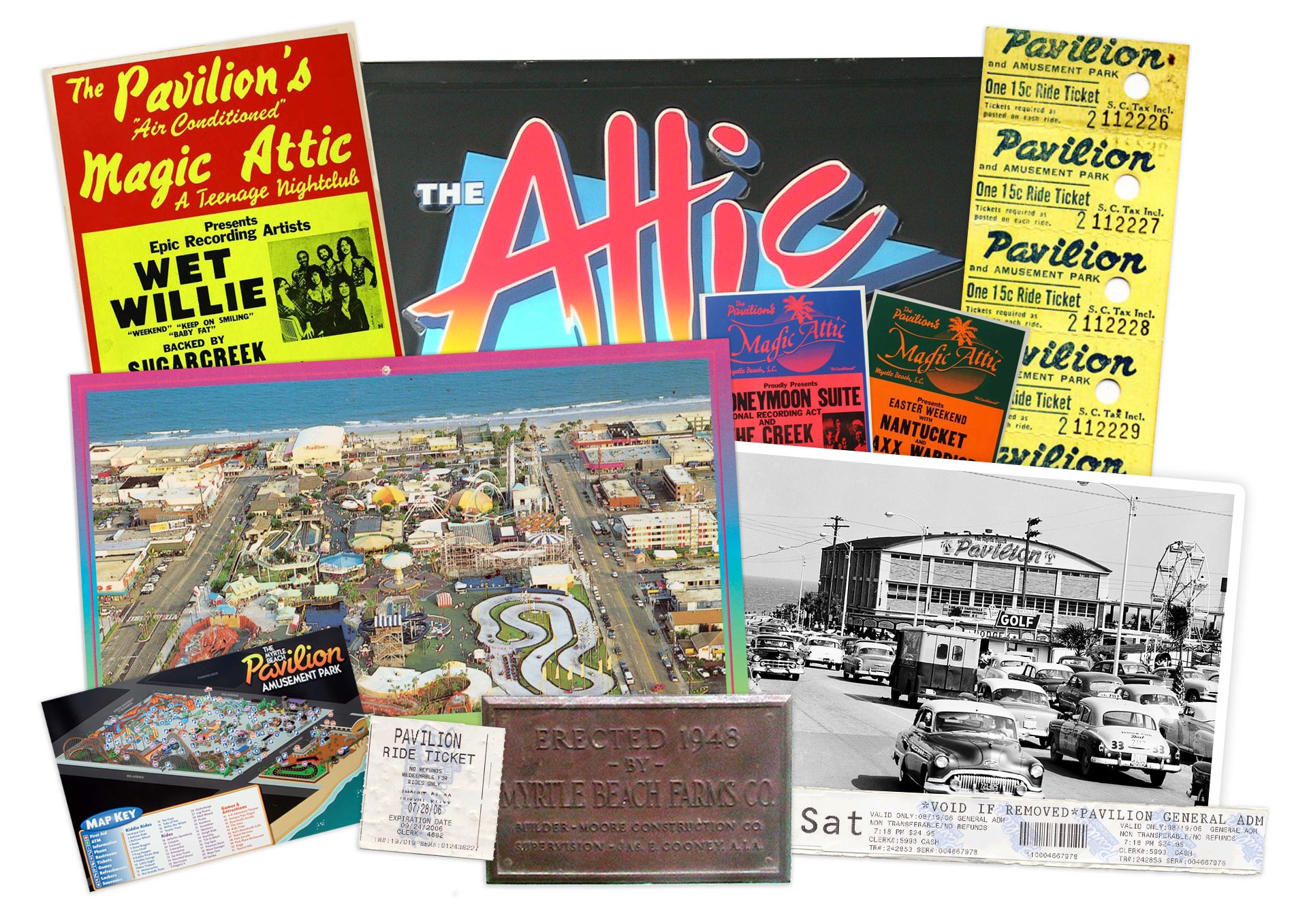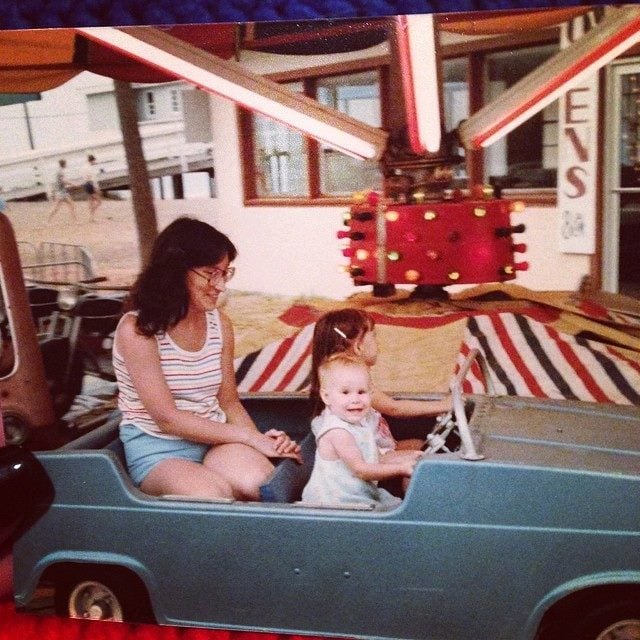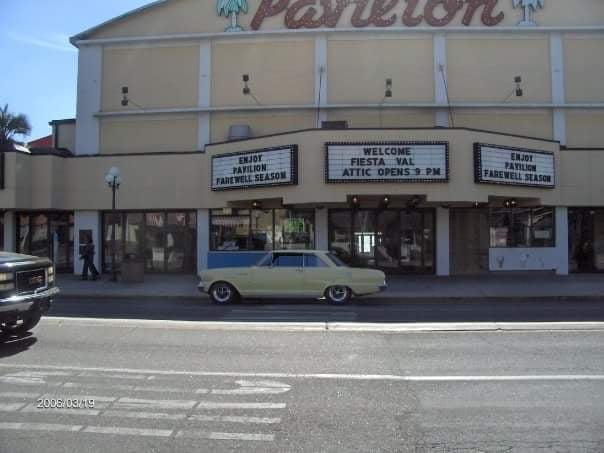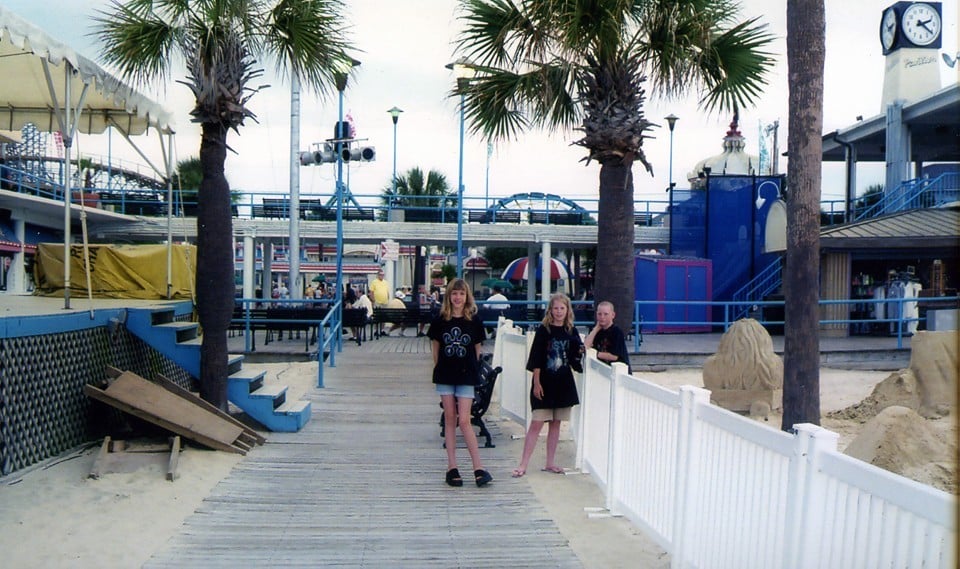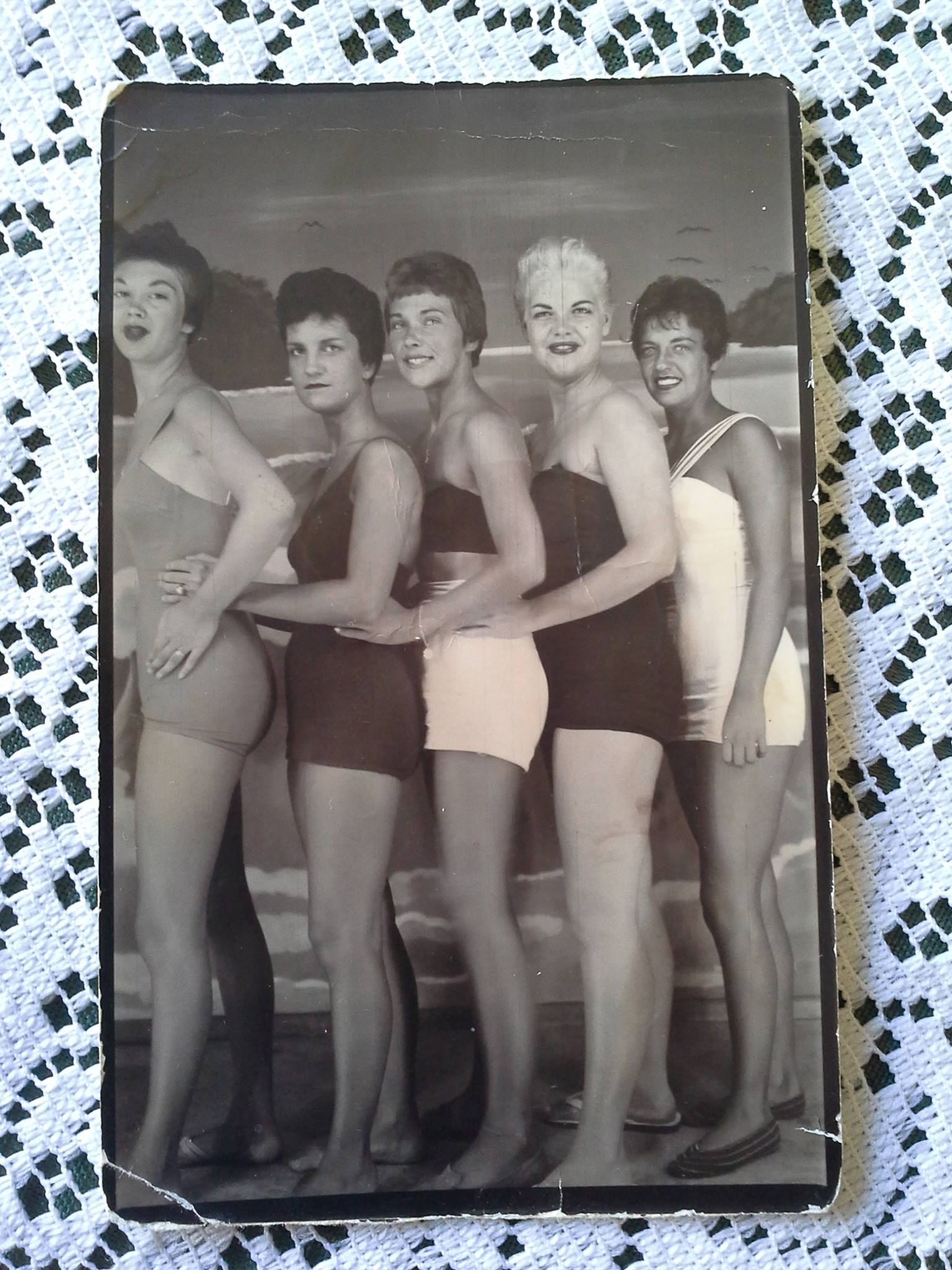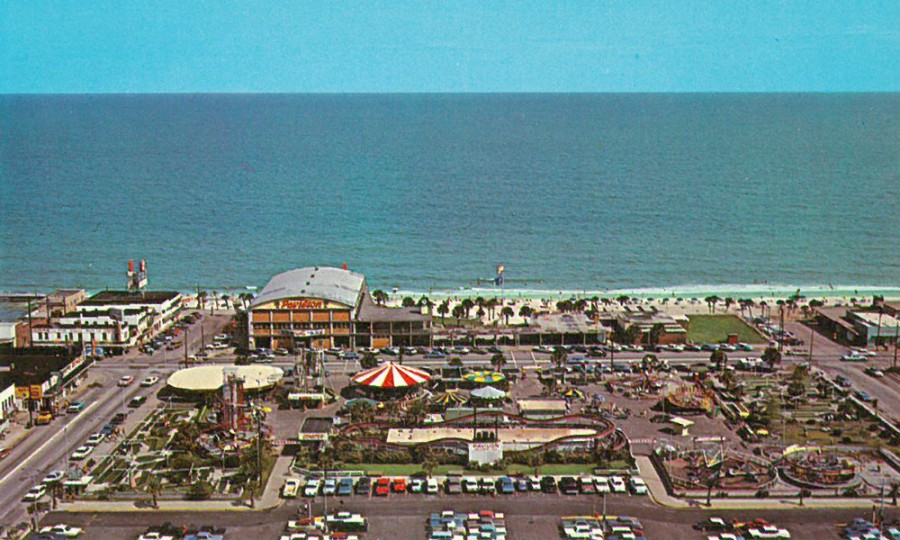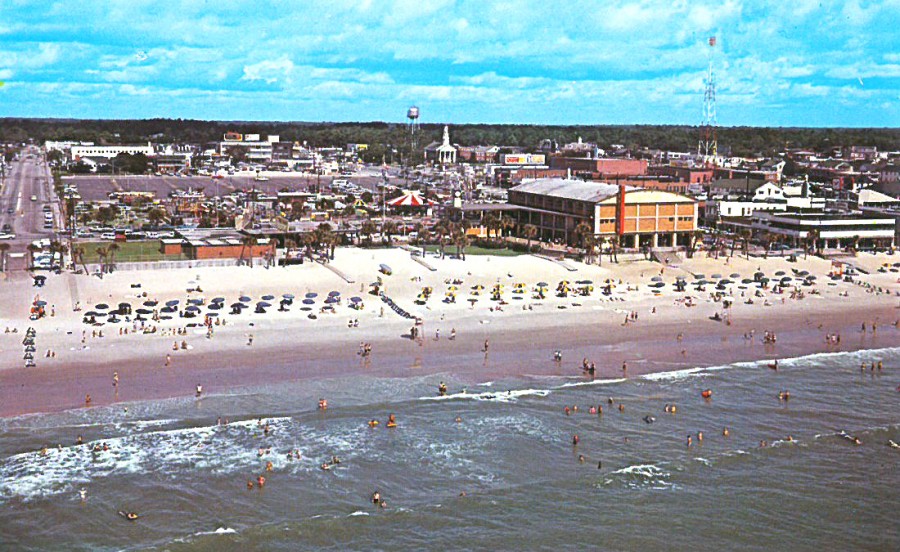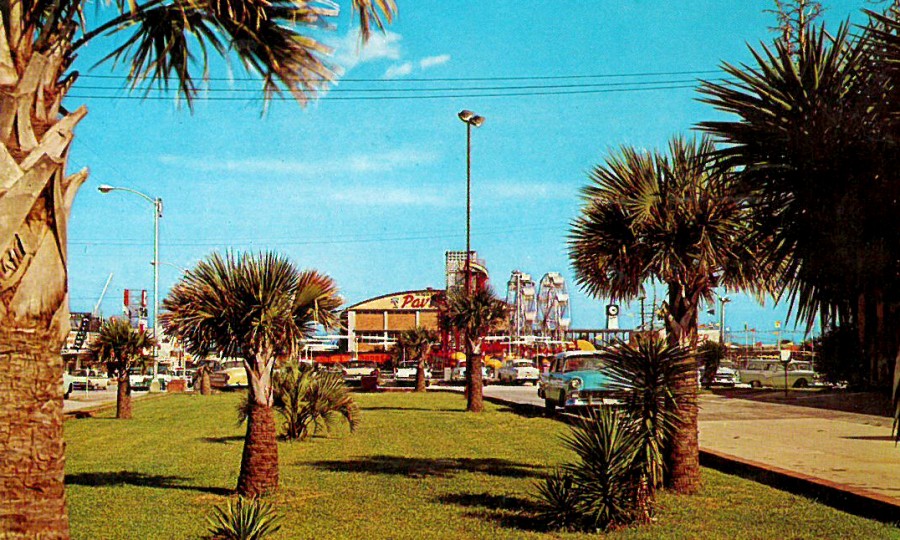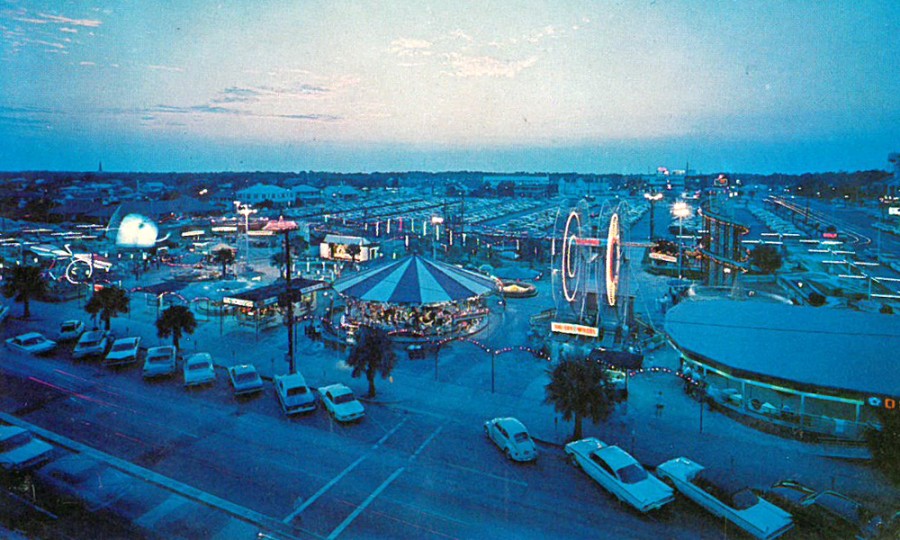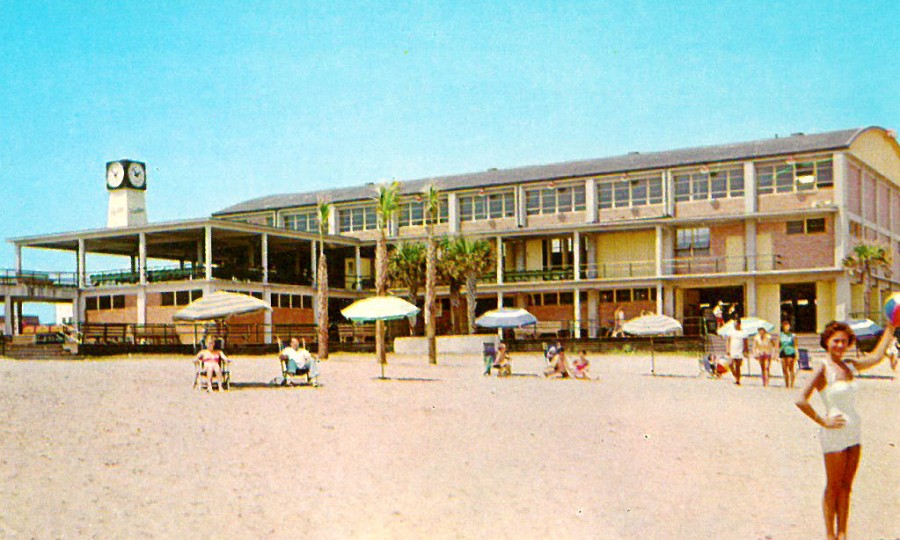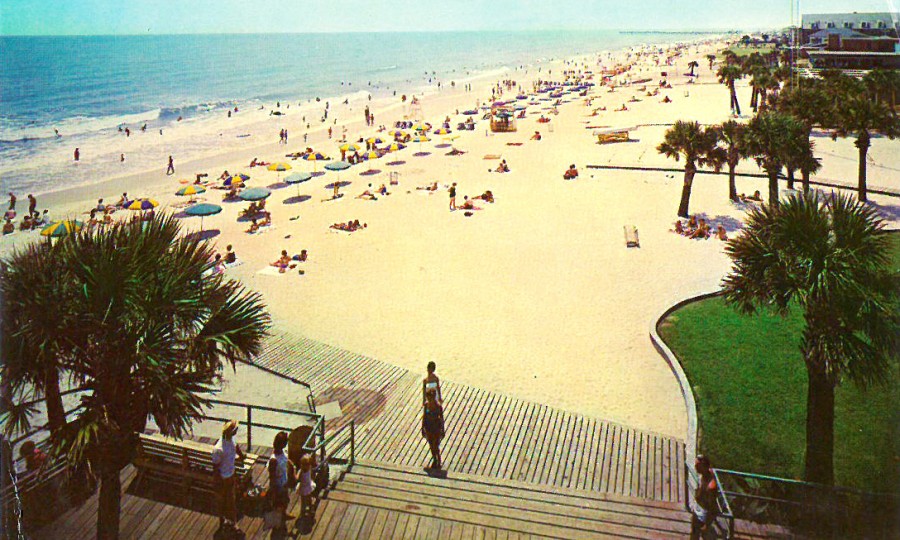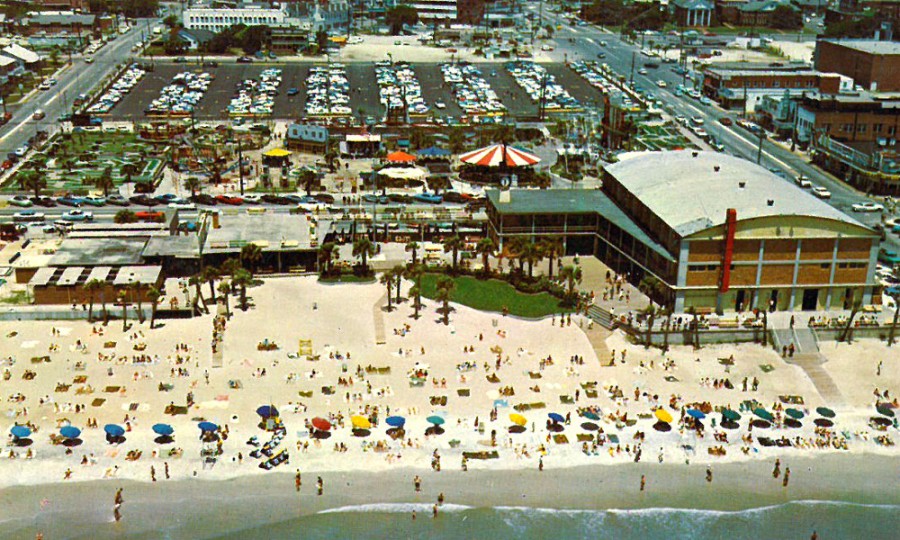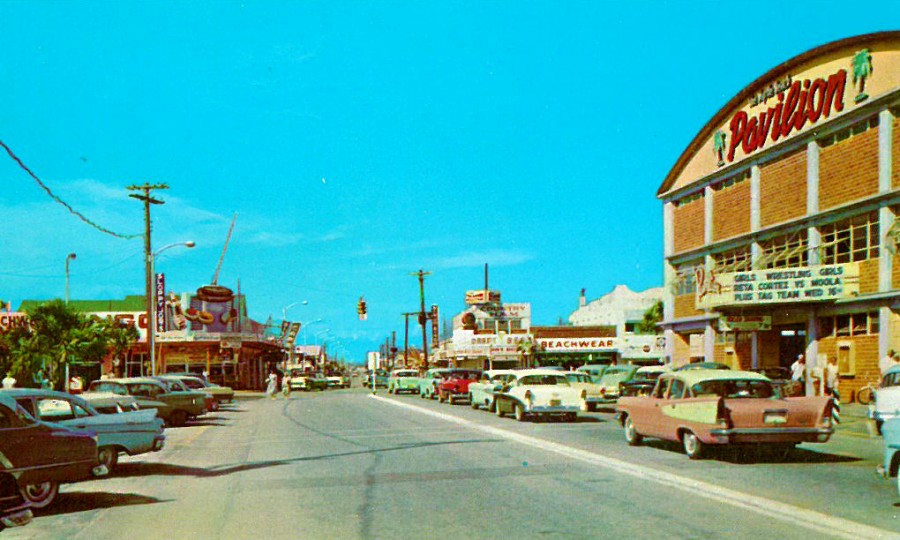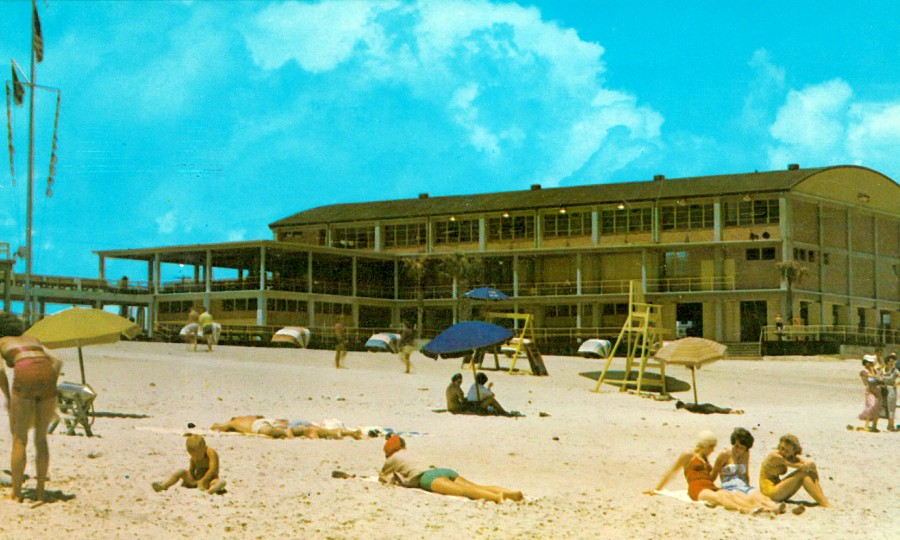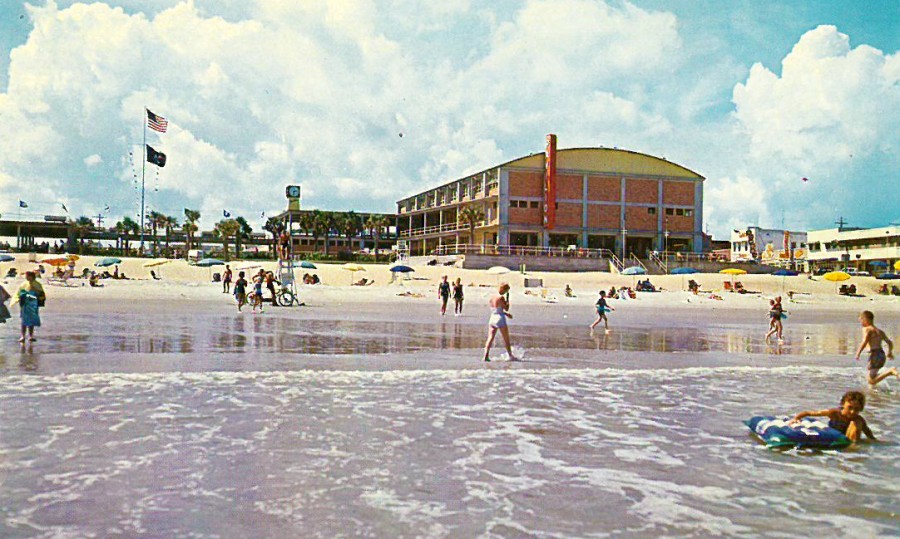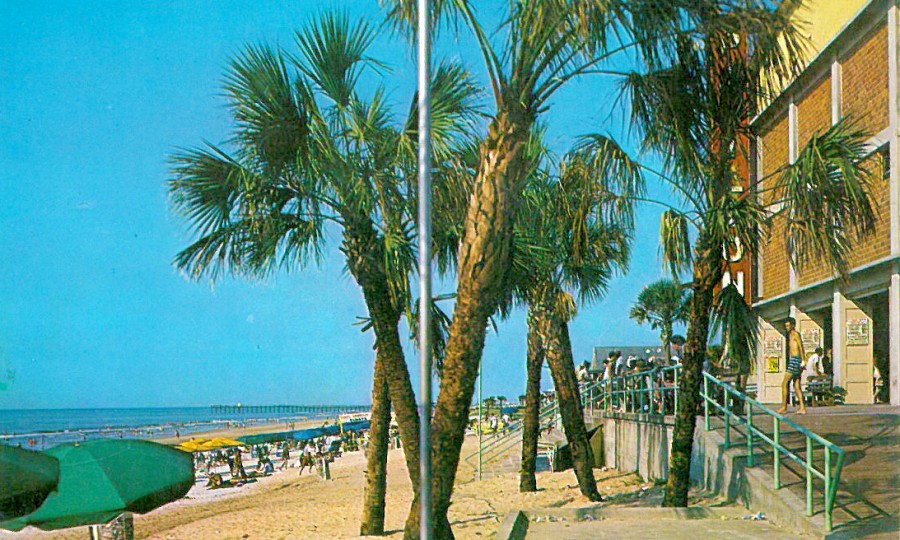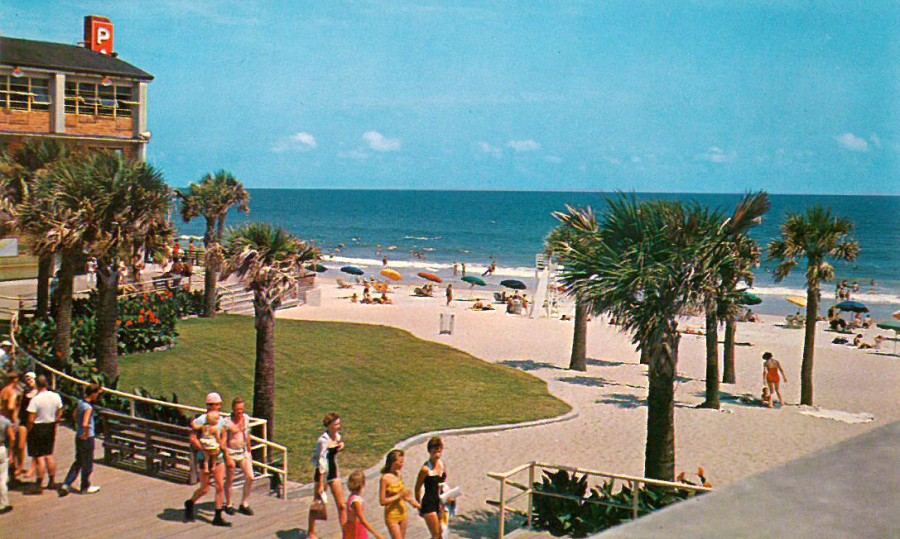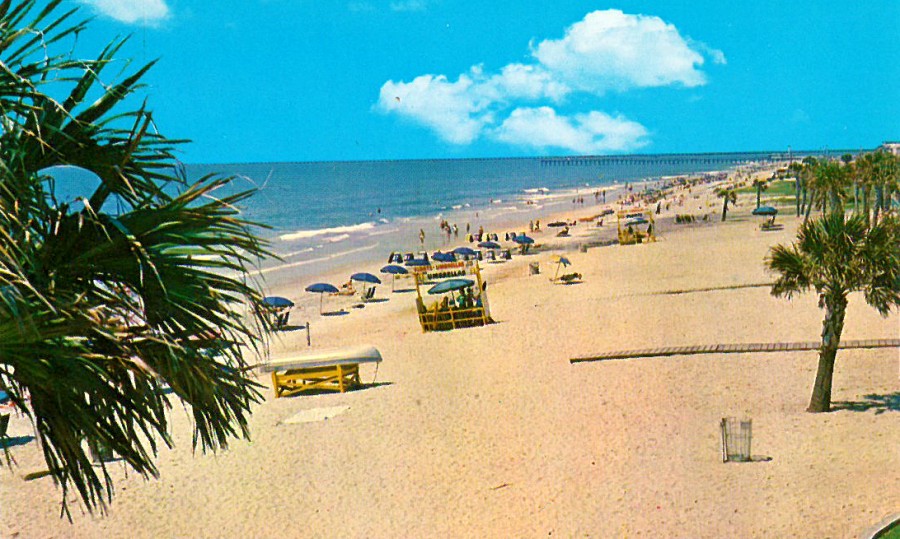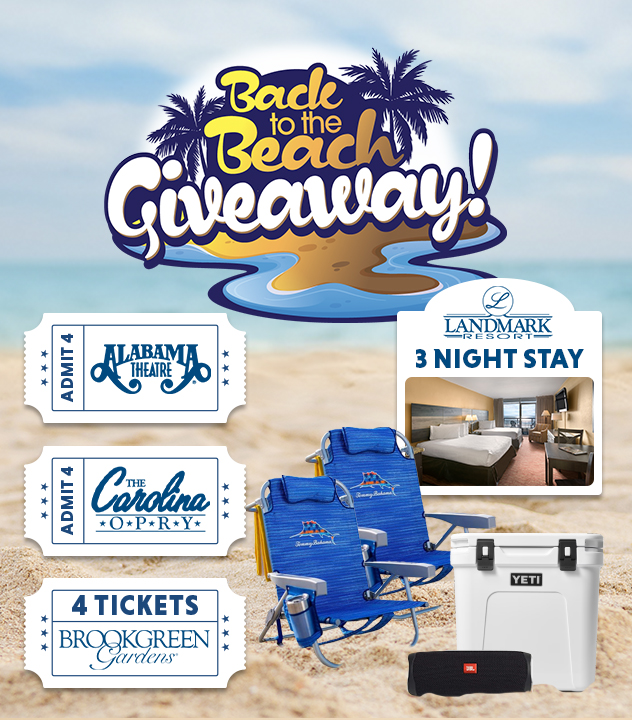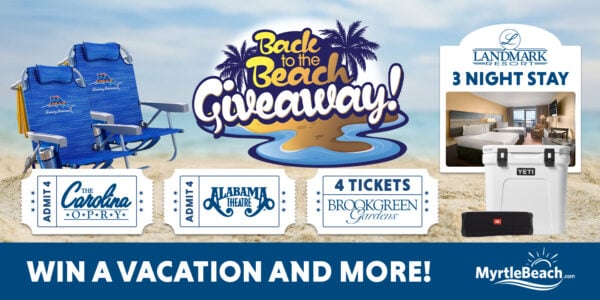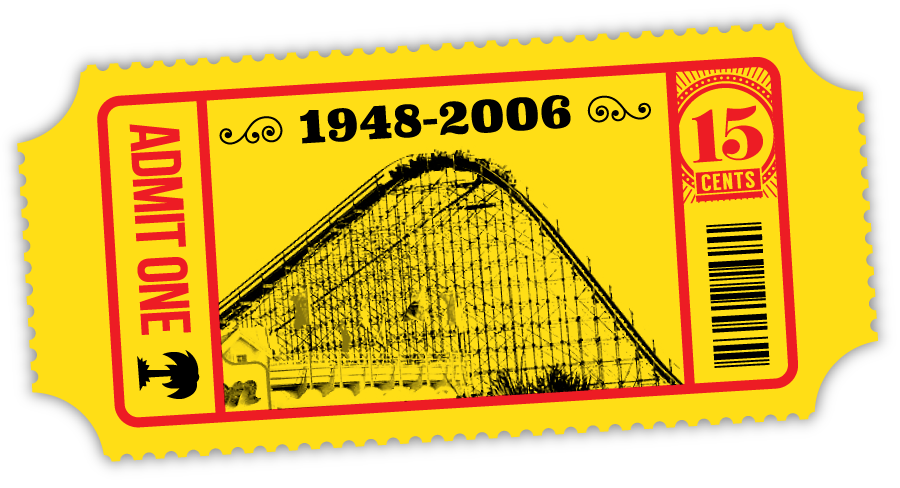
Remembering
The Pavilion
From its origins as a turn-of-the-century gathering place to its early days as a bowling alley, shooting range and dancehall to its six-decade run as the area’s premier oceanfront amusement park, The Pavilion is a sure source of memories for most any Myrtle Beach fan.
Over the years, visitors of all ages and walks of life basked in the simple pleasures of letting go and enjoying its thrilling rides, silly games, upbeat tunes, colorful characters, sugary sweet treats and amazing views in Myrtle Beach.
As a new generation of visitors experience the joys of the pavilion at Broadway at the Beach’s latest incarnation — Pavilion Park — many in the older generation are left missing the original.
A decade after its closure, we’re looking back on the history of the Pavilion, its legacy and the present and future of its historic location.

The History of
the Pavilion
1901
With the first trains running from Conway to the newly founded “New Town” around the start of the century, a place to stay is needed at the beach. The Seaside Inn, the area’s First Hotel, is built in 1901 in the area that would later become known as Myrtle Beach. At that time, oceanfront lots sell for $25, and buyers receive an extra lot if they build a house valued at $500 or more.
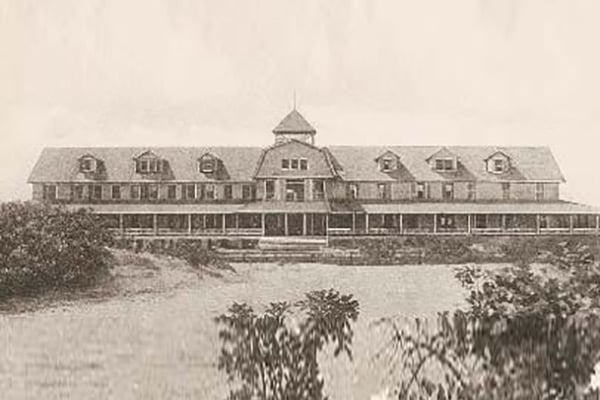
1908
Though there are not yet plans of carnival rides or amusement parks, the spiritual predecessor to the Myrtle Beach Pavilion is first constructed in 1908. This pavilion is a one-story, open-air wooden building that is part of the Seaside Inn property and serves as a gathering place for guests.
1912
What would later become one of the Pavilion’s most iconic attractions, the Herschell-Sillman Carousel, is built in 1912. This ride features frogs, lions, zebras and dragons with only a single “lead horse” — which makes it quite unique for its time. The ride is still in operation today at Broadway at the Beach and is one of only a handful of its kind left in the world.

1923
After the original Seaside Inn pavilion burns in 1920, it is replaced by a new, larger oceanfront pavilion, which opens in 1923 on the southeast corner of Eighth Avenue North and Ocean Boulevard. This two-story structure is built over a long wooden boardwalk, which stretches north to the 14th Avenue Pier. The building features various amusements, including a bowling alley, a .22-caliber shooting gallery, and an area for dining and dancing.
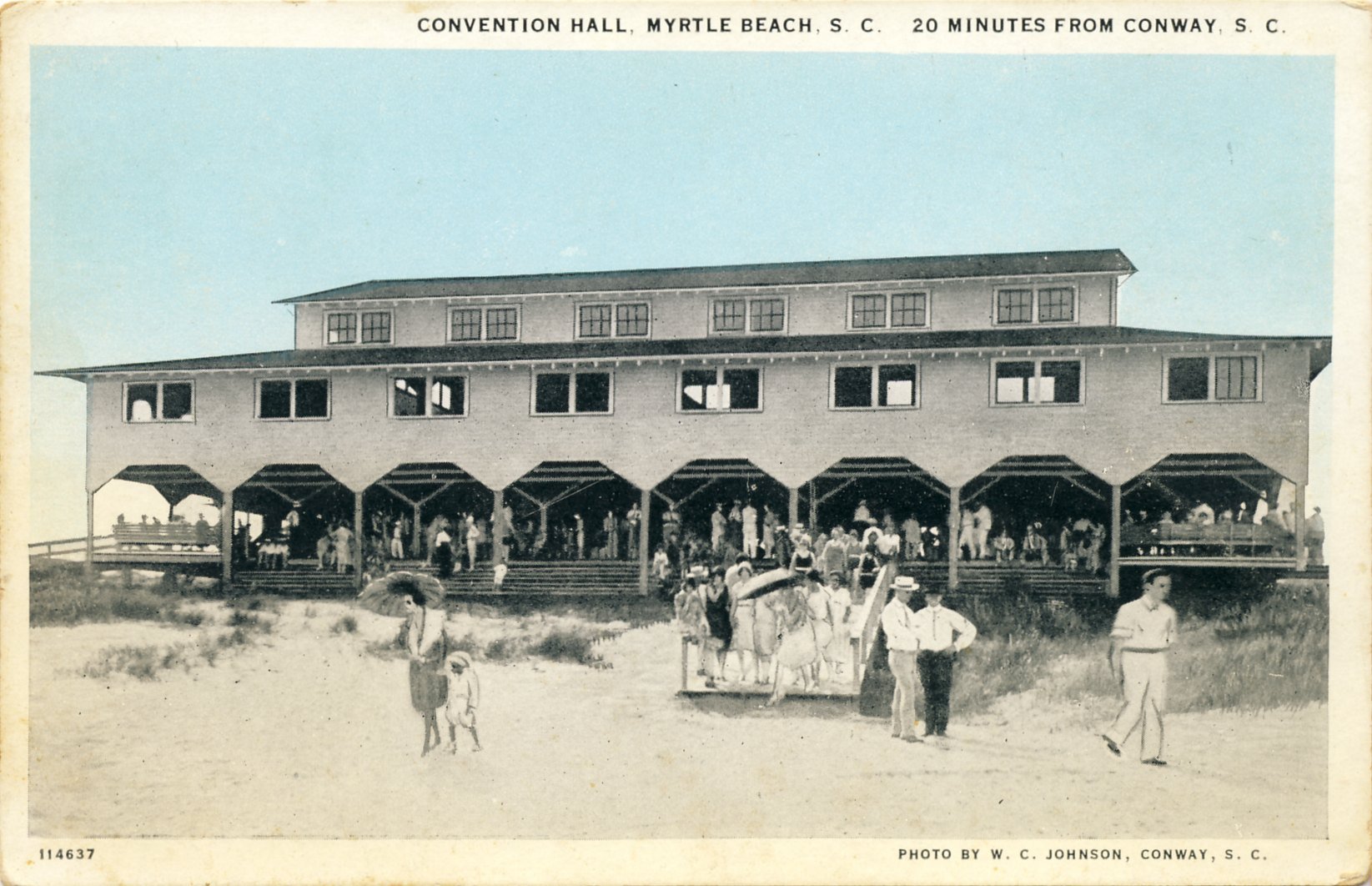
1938
As the Myrtle Beach area grows in population, tourism increases at a steady pace throughout the 1930s. The downtown area sees the addition of amusement park rides near the pavilion, and a paved, concrete walkway replaces the former wooden boardwalk. The pavilion itself is expanded in 1938, the same year Myrtle Beach is incorporated as a town.
1944
The second iteration of the pavilion burns to the ground on Dec. 28, 1944. During this time locals often gather under the pavilion’s elevated structure and build fires to stay warm in winter. Though it is never proven, many believe it is one of these fires which causes the demise of the wooden structure. Even after the destruction of the building, the pavilion’s midway remains a popular attraction for visitors.
1948
The Myrtle Beach Pavilion Amusement Park is officially built when Myrtle Beach Farms signs an agreement with a traveling carnival that is in town for the Conway Tobacco Festival. The carnival agrees to make its permanent home across the street from the old pavilion on the west side of Ocean Boulevard, as a reinforced concrete version of the main pavilion building is built on the east side of the street.
1949
The new Myrtle Beach Pavilion building, built of poured concrete to withstand winds up to 150 mph, officially opens. It has a large wooden dance floor located on the second floor along with a stage and grandstands.

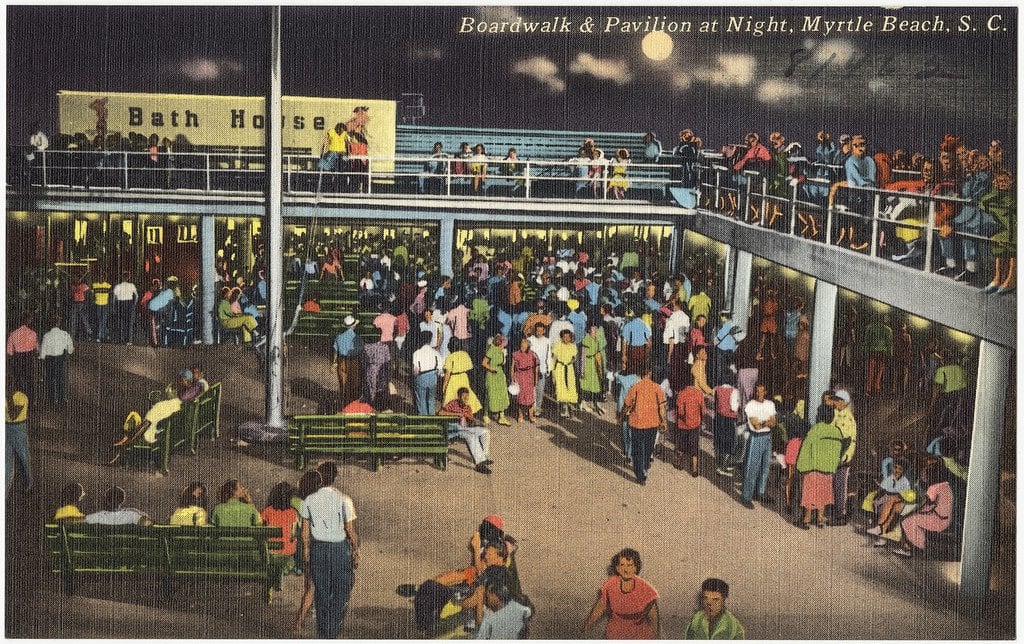
1950
The former Myrtle Beach Farms, now called Burroughs & Chapin, buys out the Central Amusement Company. Fourteen new rides — including several carnival-style flat rides — and new concessions are added to the park.
1951
The Myrtle Beach Pavilion’s first roller coaster, the Comet Jr., opens in 1951. This pint-sized wooden coaster was built by the National Amusement Devices Company and remains a favorite at the park until the late 1960s.
1954
One of the park’s most iconic attractions, German Baden-Band Organ is brought to the Pavilion for the first time. The organ was originally built for display at the 1900 World Exposition in Paris and had toured Europe on a wagon for decades before being brought to the beach.
The organ weighs in at more than two tons and measures 20 feet wide and 11 feet high with 400 pipes, 98 keys and numerous cherubs and twirling figures.
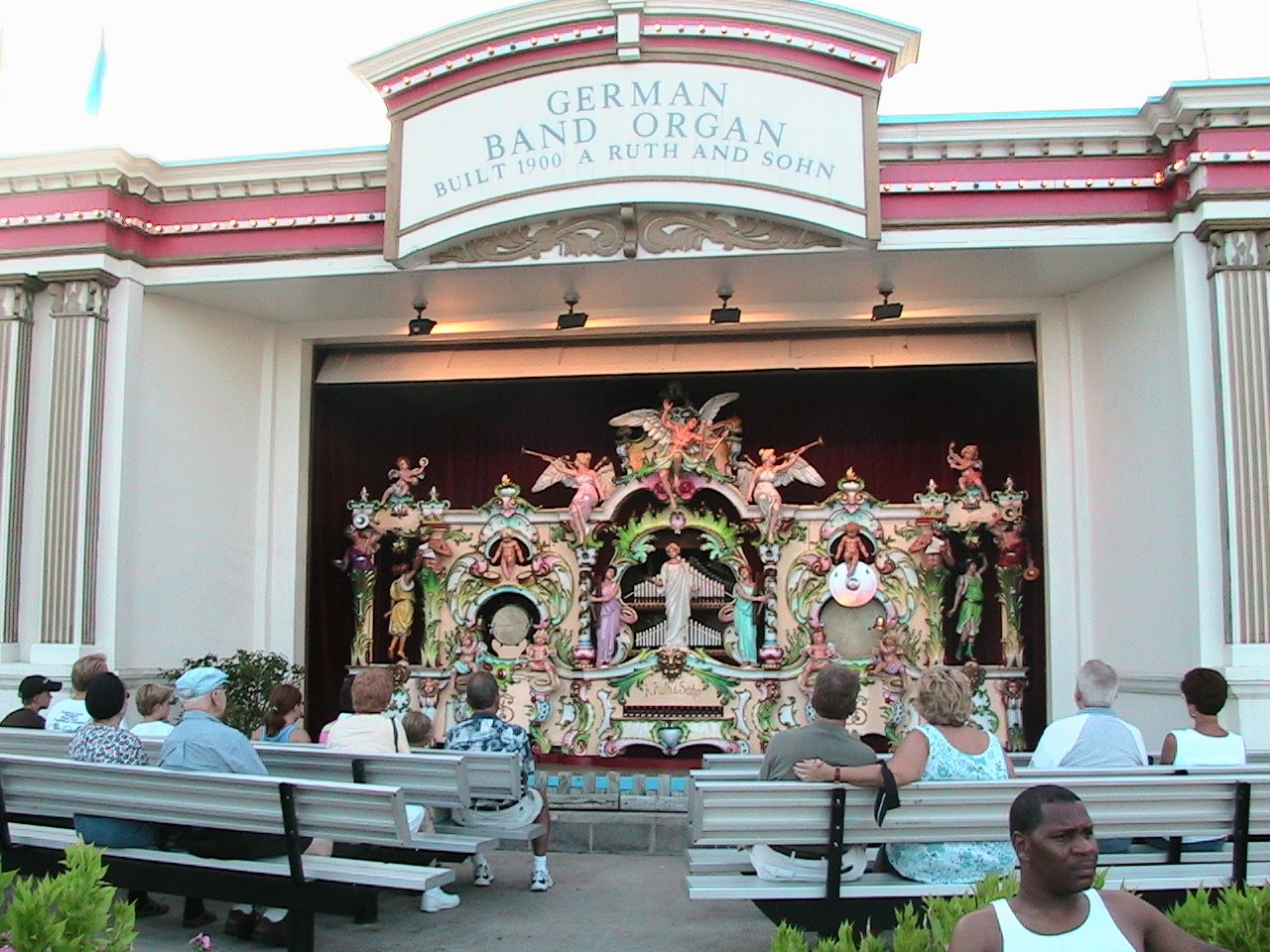
Also in 1954, Hurricane Hazel slams the Myrtle Beach coast, wiping out many oceanfront businesses and landmarks, including piers and portions of the boardwalk. Despite massive damages to the tune of $420 million across the country, the storm did not take down the reinforced pavilion structure, which became a symbol of perseverance for the town during a tragic time.
1960s
Throughout the late 1950s and into the 1960s, the area surrounding the Myrtle Beach pavilion thrives.
As Myrtle Beach became one of the top vacation destinations on the East Coast, downtown bustles with activity and new businesses.

The stretch of Ocean Boulevard near the pavilion becomes the prime spot for cruising the strip, and the pavilion’s 2,000-capacity dance hall stays busy with a steady stream of events including shag dances and concerts from beach music groups and national acts including Jerry Lee Lewis, The Temptations and many more.
1970
Though not affiliated with the original park, another nearby attraction adds to the draw of downtown Myrtle Beach when the Astro Needle Amusement Park opens across the street from the Pavilion at the corner of Chester Street and Eighth Avenue North.
Only a block wide, the smaller park can’t compete with the Pavilion’s variety of ride but does offer an “awe” factor with its 200-foot-tall signature Astro Needle ride. The park, which also includes a 10,000-sq. ft. nightclub, is eventually bought out by Burroughs & Chapin in 1981.
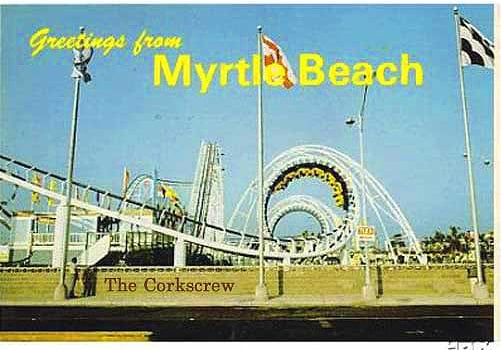
1978
The pavilion adds its first steel roller coaster, the Corkscrew. Originally built for $1.5 million, the coaster first operates on the south side of Myrtle Beach at a British-themed amusement park called Magic Harbour but is purchased by the pavilion when that park closes.
The ride features a 70-foot drop and two looping corkscrews and was in operation for more than 30 year until is was removed to make way for the Hurricane: Category 5.
Also opening in 1978 was The Haunted Hotel — originally called the "Haunted Inn" — a dark ride with scary, animatronic ghosts and ghouls inside.
1980s
The park introduces two new rides, the Enterprise and the “Mind Scrambler,” which is an update of the classic Scrambler ride in a new building with flashing lights and music. Throughout the 1980s, several smaller additions are made to the park, including the addition of a small train-themed coaster called the Little Eagle that opened in 1986.

1991
On Saturday, July 20, 1991, a 17-year-old male is killed while riding a ferris wheel at the park. The teen, who was riding with his 12-year-old sister and 15-year-old friend at the time of the accidents, had been rocking the ride’s car and was warned by the ride operator to stop, but eventually their car tipped over and the safety bar broke.
The victim fell nearly 40 feet to his death and another rider in that car also fell, hitting other cars before eventually holding onto the frame of the ride and being rescued by park workers and firefighters. In all the toll from the accident was one killed and 8 injured, with four riders having fallen out of the ride.
After this tragedy — the only safety incident in the history of the park — the ride was dismantled and put out of operation.
1992
In 1992, the portion of Chester Street that runs through the pavilion is closed off, and the amusement park is expanded to take up the entire area between Eighth and Ninth avenues North from Ocean Boulevard to Kings Highway.
1998
A longtime favorite, the Galaxi roller coaster shuts down after the 1997 season and is moved to the NASCAR Speedpark in Myrtle Beach. Occupying its space, the Mad Mouse opens in 1998. This $2 million compact steel roller coaster features small cars that race around a track that features many quick dips and sharp, hairpin turns. A similar ride is still in operation today at nearby Family Kingdom amusement park.
2000
The park’s signature rollercoaster, the Hurricane: Category 5, is built for $6 million and becomes the tallest, fastest and longest wooden coaster in South Carolina. The ride was a 3,800-foot-long, hybrid-structure coaster that featured an out-and-back style layout with 14 turns, a 100-foot drop, and a top speed of 55 mph.

2006
Citing financial instability, Burroughs & Chapin announces that the Myrtle Beach Pavilion Amusement Park will close at the end of the 2006 season. Despite several down years leading up to the closure, the park experiences a renaissance in its Farewell Season with increased business, and several online petitions circulate in an effort to save the park. The park closes to the public on Sept. 24, with a ticketed “The Last Ride” event held on Sept. 30 and a final private party send-off at The Attic in October.

2007
Demolition begins on the Pavilion and several of the park’s rides, including the Hurricane. The ride is scrapped except for the trains, which are sold to King’s Island Amusement Park in Ohio. The final pieces of the demolition happen in March and April. For a short time after the demolition, Burroughs & Chapin sells collector bags of crushed concrete from the Magic Attic floor and the Walk of Fame on the Pavilion store website.
Later that year, the Pavilion Nostalgia Park opens at Broadway at the Beach, featuring relocated pieces of the park including the carousel, the organ, an arcade and rides including the Pirate Ship, tea cups and various other kiddie rides.

2010
After several years of sitting vacant with little to no activity during “The Great Recession” in 2008 and 2009, the area near the former pavilion site begins to gain new life.
The 1.2-mile Myrtle Beach Boardwalk and Promenade opens, running along the oceanfront side of the old pavilion lot.
A historical marker commemorating the Myrtle Beach Pavilion is placed on the northeast corner of the lot and a small live-music stage and sand volleyball courts are built in the area where the pavilion building once stood.

2012
Occupying a small portion of the amusement park’s space near the Kings Highway side of the lot, Myrtle Beach Adrenaline Adventures opens a zipline attraction on the former Myrtle Beach Pavilion area.
The attraction features six 600-foot ziplines, which span between two towers at 40 mph, and also a “free fall” experience from a 60-foot tower.

2014
Rebranding its Pavilion Nostalgia Park built in 2007, Broadway at the Beach expands its amusement offerings into the new Pavilion Park. The attraction spans three areas, including the Pavilion Park East (the former Pavilion Nostalgia Park), Pavilion Park West (a kid-focused area) and Pavilion Park South (an area focused on thrilling rides).
New rides added during this time include the Pipeline Slide, a huge dryslide; the Cliff Hanger, a spinning hang-gliding ride; The Rocket, a 200-foot-tall tower with spinning, flipping swings; and The Speed XXL, where riders are spun around at speeds of up to 50 mph and heights of up to 130 feet.

2015
The inaugural Carolina Country Music Festival is held in June on the former Myrtle Beach Pavilion site. In the years since the closure of the Pavilion, the area — now known as Burroughs & Chapin Pavilion Place — had played host to several events, including the Beach Blast! Christian Music Festival, Coastal Uncorked, The Native Sons Salt Games, Myrtle Beach Oktoberfest and the Sunday Celebrations concert series, but nothing with the impact of this new event.
The four-day festival featured A-list country music acts, including Rascal Flatts, Lady Antebellum and Eric Church and drew more than 10,000 attendees in its inaugural year.

2016
As the city marks a decade since the closure of the Myrtle Beach Pavilion Amusement park, the former pavilion lot remains mostly empty. In June, around the time of the second annual Carolina Country Music Festival, which attracted more than 20,000 attendees, Myrtle Beach Adrenaline Adventures submits plans to the city to expand its zipline attraction to occupy more of the 11-acre lot.

Making Memories at The Pavilion
Whether it was dancing the night away with friends, experiencing the thrills of riding the rides or just strolling through the park with loved ones, The Myrtle Beach Pavilion created an endless stream of vacation memories for visitors.
To capture the nostalgia of the park and what made it so special, we asked our MyrtleBeach.com fans what they remembered most fondly about the Myrtle Beach Pavilion.
Take a look at the memories they shared or add your own in the comments below:
More From
The Pavilion
Videos
Want to remember it first-hand? There’s a ton of great Myrtle Beach Pavilion videos available on YouTube. Here’s a few of our favorites:
Postcards
Check out these great images of the Pavilion area taken from historic postcards from the 1960s (Click here to see more great postcards):
Resources
Want to learn even more about the Pavilion? Check out these great websites and resources:
- MyrtleBeach.com - 10 Things Myrtle Beach Pavilion Fans Will Love
- MyrtleBeach.com - The History of Myrtle Beach Attractions
- MyrtleBeach.com - Pavilion Park at Broadway at the Beach
- FunBeaches.com - The Last Dance
- Myrtle Beach Remembered - Myrtle Beach Pavilion
- GoToMyrtleBeach.com - Myrtle Beach Pavilion Amusement Park: A Look Back
- Bring Back The Pavilion - Facebook Fan Page
- Amazon.com - "Images of America: Myrtle Beach Pavilion" by Lesta Sue Hardee & Janice McDonald

